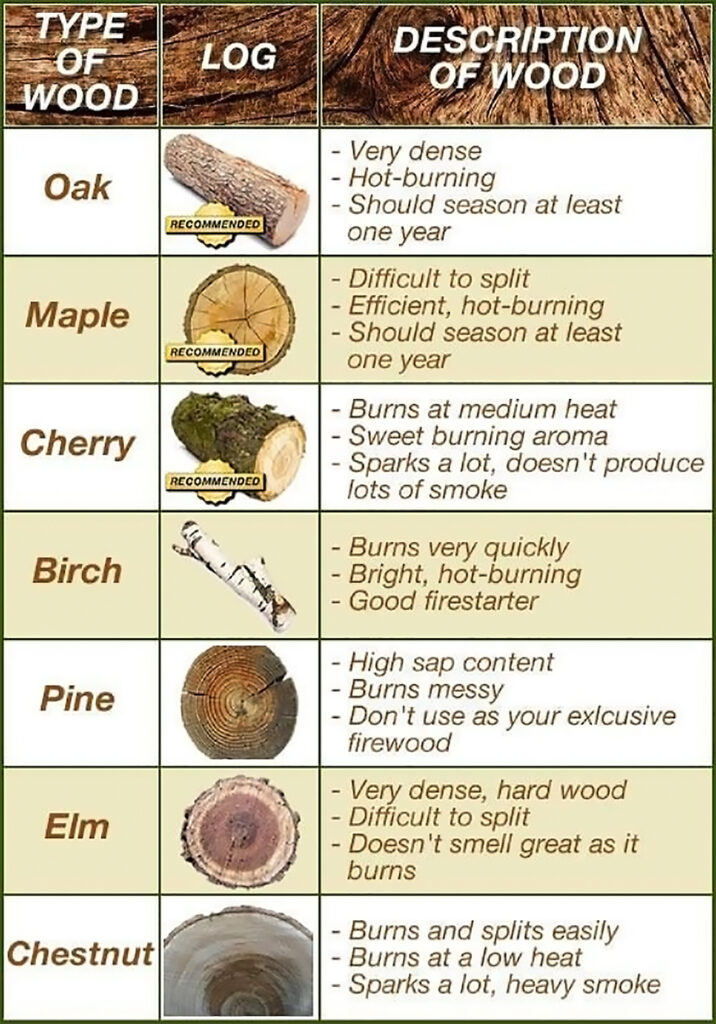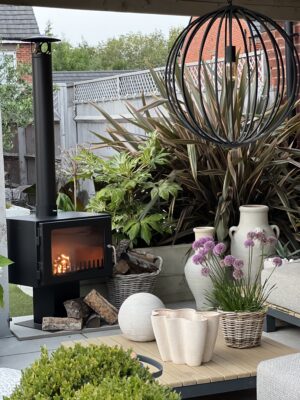Are you ready to transform your backyard into a cozy oasis with your outdoor log burner? The secret to a warm, efficient, and environmentally friendly fire lies in choosing the right wood. In this ultimate guide, we’ll unveil the top tips for selecting the perfect fuel for your outdoor log burner, ensuring you get the most out of your investment. From hardwoods to softwoods, seasoning techniques to eco-friendly alternatives, we’ve got you covered. Get ready to become a wood-burning expert and elevate your outdoor experience!
When it comes to choosing wood for your outdoor log burner, understanding the distinction between hardwoods and softwoods is crucial. Hardwoods, derived from deciduous trees, are generally denser and burn longer, making them ideal for sustained heat output. Popular hardwood options include oak, maple, and hickory. On the other hand, softwoods from coniferous trees like pine and cedar ignite quickly and burn hot, making them excellent for starting fires or short burning sessions.
Pro Tip: For the best of both worlds, consider using a mix of hardwoods and softwoods. Start your fire with softwoods for quick ignition, then add hardwoods for long-lasting heat.
One of the most critical factors in choosing wood for your outdoor log burner is ensuring it’s properly seasoned. Freshly cut wood, also known as “green” wood, contains high moisture content, which leads to poor combustion, excessive smoke, and potential creosote buildup. Seasoning involves allowing wood to dry naturally for at least 6-12 months, reducing its moisture content to below 20%.
How to tell if wood is well-seasoned:
One of the most critical factors in choosing wood for your outdoor log burner is ensuring it’s properly seasoned. Freshly cut wood, also known as “green” wood, contains high moisture content, which leads to poor combustion, excessive smoke, and potential creosote buildup. Seasoning involves allowing wood to dry naturally for at least 6-12 months, reducing its moisture content to below 20%.
How to tell if wood is well-seasoned:
If you’re looking for wood that burns hot and long, these hardwood varieties are your best bet:
a) Oak: Known for its high density and slow burn rate, oak produces excellent heat and long-lasting coals. b) Hickory: With its high heat output and pleasant aroma, hickory is a top choice for outdoor log burners. c) Maple: Offering a good balance of heat output and burn time, maple is a versatile option for various burning needs. d) Ash: Easy to split and quick to season, ash burns hot and produces minimal smoke.
While hardwoods are often preferred for their long burn times, softwoods have their place in your outdoor log burner repertoire:
a) Pine: Ideal for starting fires due to its high resin content, but burns quickly. b) Cedar: Offers a pleasant aroma and is excellent for kindling or short burning sessions. c) Spruce: Burns hot and fast, making it suitable for quick warmth on chilly evenings.
Remember: Always use softwoods in moderation and in combination with hardwoods to avoid excessive creosote buildup.
Proper storage is key to maintaining the quality of your seasoned wood:
a) Compressed sawdust logs: Made from waste wood products, these burn efficiently and produce less ash. b) Coffee grounds logs: An innovative option that repurposes used coffee grounds into burnable logs. c) Biomass briquettes: Composed of compressed organic materials, these offer a clean-burning alternative to traditional wood.
Some types of wood should never find their way into your outdoor log burner:
Conclusion:
Choosing the right wood for your outdoor log burner is an art that combines knowledge, patience, and a bit of experimentation. By following these pro tips, you’ll be well on your way to creating the perfect outdoor ambiance while maximizing efficiency and minimizing environmental impact. Remember to prioritize well-seasoned hardwoods, use softwoods strategically, and explore eco-friendly alternatives. With the right fuel, your outdoor log burner will become the heart of countless memorable gatherings and cozy evenings under the stars. So, grab your axe, stack that wood, and get ready to ignite the perfect flame!
Some types of wood should never find their way into your outdoor log burner:
hoosing the right wood for your outdoor log burner is an art that combines knowledge, patience, and a bit of experimentation. By following these pro tips, you’ll be well on your way to creating the perfect outdoor ambiance while maximizing efficiency and minimizing environmental impact. Remember to prioritize well-seasoned hardwoods, use softwoods strategically, and explore eco-friendly alternatives. With the right fuel, your outdoor log burner will become the heart of countless memorable gatherings and cozy evenings under the stars. So, grab your axe, stack that wood, and get ready to ignite the perfect flame!

Tree height: 0%

If you really must leave, please fill in your email and we will let you know when we have our price drops or new coupon codes